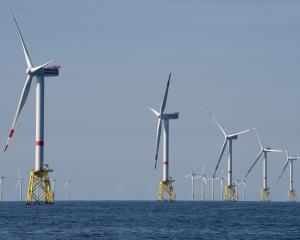

The first year of measuring is known as the base year and from then the aim is to be actively reducing emissions and be able to report a reduction in the following years.
With recent legislation, i.e. the Climate Change (Zero Carbon) Amendment Act (2019), aiming for zero net carbon emissions by 2050, the landscape of calculating and managing carbon emissions will change vastly in the coming years.
The usual and well known ways to reduce carbon emissions are often the easiest place to start; things like reducing car travel and changing cars to low-emission options such as electric cars and hybrids when appropriate. This addresses what are referred to as ‘‘scope 1’’ emissions.
Then there is having an energy management system to reduce electricity consumption (scope 2 emissions). This can involve thinking about when and how your business uses electricity, e.g., switching off and swapping to energy efficient options, such as LED light bulbs.
Other opportunities for lowering emissions include e-conferencing instead of travel, reducing waste to landfill, having more vegetarian options for food and taking public or active transport to work.
Furthermore, remote working and working from home seems to reduce carbon emissions. If staff travel is included in the company footprint then staff working remotely, even one day a week, can reduce the emissions in this area. Considering where and when your staff work can reduce carbon emissions while providing benefits of flexibility for staff.
After reducing emissions with these easier options, there are many eco-innovation strategies that businesses can develop to bring about shifts to lower carbon emissions. These can include redesigning products, rethinking markets, re-engineering processes and re-using byproducts and waste.
Systematic change will also be needed to continue to reduce greenhouse gas (GHG) emissions.
Systems thinking shifts the focus from aspects of efficiency gains — in which easier changes save the business money as well as cutting emissions — to a situation where a business starts to invest in practices and equipment that bring reductions and create a competitive advantage for the business into the future.
An example of this is the circular economy, which we are starting to see happening here in Aotearoa. Such changes shift business models, supply chains, consumer culture and thinking around ownership models of goods.
To address those emissions that are harder to shift, many businesses turn to offsetting.
The concept of carbon offsetting has been a source of debate. It is criticised for being an opt-out, allowing organisations to continue to operate as usual while paying someone else to offset your emissions, but offsetting has enabled planting and eco-innovations that might not have occurred otherwise.
A well known example is Air New Zealand’s offsetting scheme FlyNeutral, which calculates the amount of money needed to offset your flight’s emissions and donates that money to offsetting initiatives, such as tree planting or other verified sustainability projects. This pushes the responsibility on to the customer to pay the extra to offset and know their flight was potentially carbon neutral.
Finally, the big question is, why change at all? To which there are many responses, culminating in the existential matter of enabling humankind to continue to co-exist with other species on this planet in some sort of safe operating space.
To address the question from a business perspective, there’s a three-pronged approach.
First, some markets are already demanding change and will continue to demand low-carbon products and services.
Second, technology and technological investment is changing globally and shifting towards renewable, green and low-carbon technologies. To not know about these technologies can result in stranded assets and lagging behind.
Finally, regulation will happen (as it already is) that will make business-as-usual more costly.
As things stand, New Zealand’s emissions are on track to overshoot our Paris Agreement target to 2030 by 106 million tonnes of CO2.
At a conservative estimate of a tonne of carbon costing about $100, that’s a significant amount of money per annum that the country will be paying to offset — notwithstanding the social and environmental costs.
As a result, goods and services will become more costly.
At that point, the question is whether you’ve listened to the market and kept up with the technological changes in your industry to be able to maintain a unique selling proposition that customers are willing to value and pay for.
Getting a measure
The GHG Protocol places GHG emission sources into Scope 1, Scope 2 and Scope 3 activities.
Scope 1: Direct emissions from sources owned or controlled by the organisation (i.e. within the organisational boundary). For example, emissions from combustion of fuel in vehicles owned or controlled by the organisation.
Scope 2: Indirect emissions from the generation of purchased energy (in the form of electricity, heat or steam) that the organisation uses.
Scope 3: Other indirect emissions occurring because of the activities of the organisation but generated from sources it does not own or control (eg, air travel).
Source: Ministry for the Environment, Measuring Emissions: A Guide for Organisations
- Sara Walton is an associate professor of sustainability and business at the Otago Business School, University of Otago. Each week in this column, one of a panel of writers addresses issues of sustainability.












